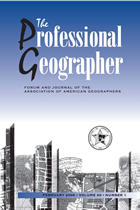Description
Publication by DPDF 2008 “Human Dimensions of Global Environmental Change” Fellow Peter Richards.
From 1945 to 2000, the extent of Paraguay’s Atlantic Forest was reduced from 73,000 to 12,000 square kilometers. Deforestation rates were exceptionally high from the late 1960s through to the end of the century. During this period, dual agricultural frontiers pushed into the region from both east and west, resulting in a production landscape defined by two principal commodities: soybeans and cotton. This article considers the expansion and contraction of these industries and addresses their impacts on the region’s forest cover. Findings suggest that the role of cotton and smallholder agriculture has been greatly diminished as a driver of land cover change in the region since 1990. High rates of forest loss were sustained, however, partly as a result of continued pressure for agricultural expansion for soy production.

